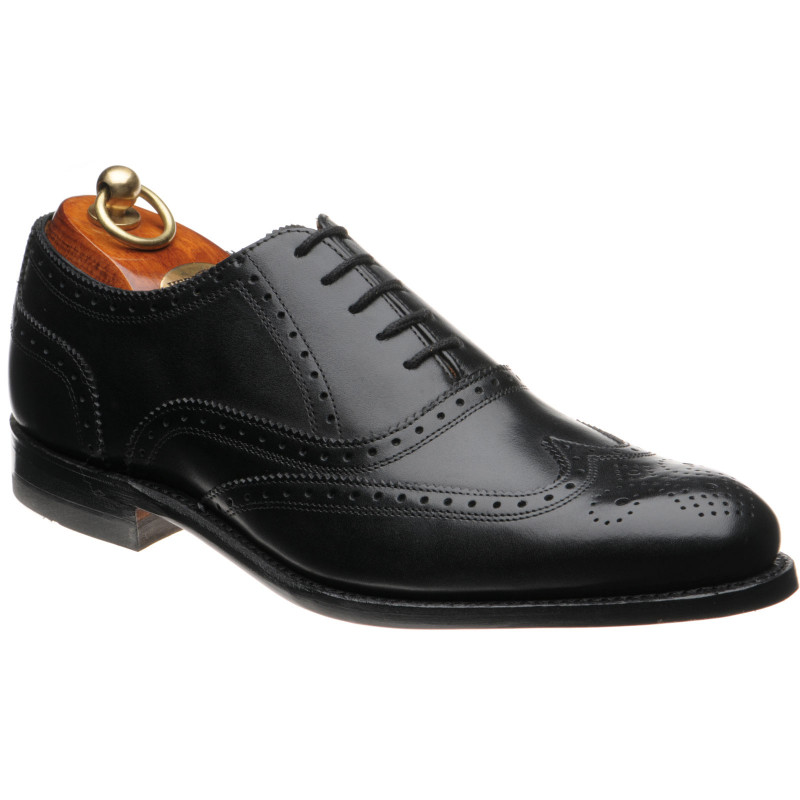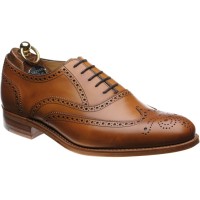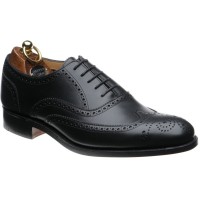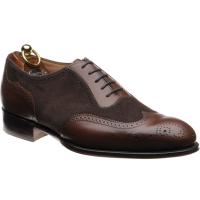About Brogue Shoes
The Brogue is widely regarded to be one of the most iconic shoe designs for men. With a unique style that can be
easily identified by looking at the surface of the shoe, the first thing to note is that the term ‘brogue’ refers to
the holes punched into the leather. The more holes that are on the shoe, the more brogueing it has.
View All Our Brogue Shoes
Using this simple classification, any footwear with brogueing can be considered a brogue. By contrast, an Oxford shoe
is so designated by its lacing. So while brogues can be Oxfords, and vice versa, they do not necessarily have to be.
You can have a brogue with the lacing style of a Derby instead.
History of the Brogue Shoe
The exact history of the brogue is not quite clear. All indications suggest the earliest origins of the shoe trace
back to Ireland and Scotland at some point prior to the mid-to-late 16th century. The original shoes were outdoor
footwear for the country. They were designed to wear when traversing boggy or damp terrain, with the holes enabling
water that got into the shoe to escape so that the foot of the wearer could dry more quickly. They were made with
untanned leather and were not very ornate at all.
When the word 'brogue' came into use in the late 16th century, it was derived from the Gaelic 'brog', referring to
shoes in general. It wasn't until broguing came to refer to the perforations and serrations in shoe leather that
brogues became a specific style of shoe. That transition occurred somewhere in the early 20th century.
The first modern brogues were typically reserved as country footwear for men. However, the style caught on among city
folk as well. Edward, the Prince of Wales deserves some credit for having made the shoes popular among Brits during
the 1930s.

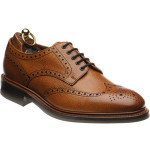
WAS $435.00
SPECIAL OFFER $318.00
SAVE $118.00

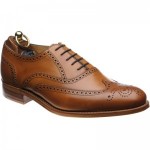
$441.00 incl tax and delivery
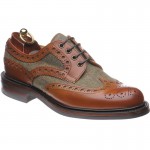
WAS $603.00
SPECIAL OFFER $437.00
SAVE $167.00

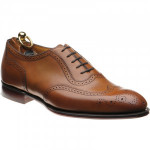
WAS $668.00
SPECIAL OFFER $472.00
SAVE $196.00
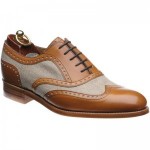
$441.00 incl tax and delivery
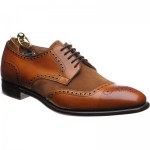
WAS $474.00
SPECIAL OFFER $347.00
SAVE $128.00
Defining Features of the Brogue
The term 'brogue' as it applies to shoes refers to broguing. What is a broguing? It is the decorative perforations
and serrated edges purposely added to shoe leather to create a specific look. The perforations are essentially holes
while the edges are the unfinished edges of the leather created during the cutting process.
All brogues sport at least minimal perforations on the top edge of the toe cap. The edges of the leather are also
serrated and unfinished. Some styles of brogues also include additional decorative perforating at the centre of the
toe cap as well. This is known as a medallion.
Also note that perforations and serrated edges may be found along the top edge of the quarter, running from the
tongue just back to the heel. This broguing really has no other purpose beyond decoration.
Variations of the Brogue Style
Needless to say that the brogue has evolved over the last 100 years. There are three primary styles of brogue along
with additional styles within those three. As you read through the descriptions, remember that a brogue is defined
by its toe cap and decorative broguing.
1. Full Brogues
The most fancy kind of brogue is the full brogue, or wingtip shoe. The first thing you notice about it is the overly
large toe cap with a wingtip extension that may or may not extend the entire length of the shoot. This design makes
the toe cap look like the letter 'W' with swooping wings. Done right, this kind of toe cap looks exquisite. It
offers plenty of surface area for intricate broguing.
View all our men’s brogues
2. Half Brogues (Semi-Brogues)
Next is the semi or half brogue. Like their full brogue cousins, these have a rather large toe cap in relation to the
rest of the shoe. However, half brogues do not have the wingtip extensions. They have broguing at least along the
top of the toe cap. Some have decorative broguing in the centre and others also include broguing along the top of
the quarter.
View all our semi-brogues
3. Quarter Brogues
Finally we have quarter brogues. These are the simplest of all brogues with perforations only on the upper edge of
the toe cap. There is no medallion or any other broguing on the shoe.
In addition to these three main categories, there are several other different styles of brogues:
- Spectator Shoes – Full brogues with wingtips and a contrasting colour. Most spectator
shoes sport toe caps,
wingtips, and lace panels of a darker colour than the rest of the shoe. Common colour combinations are tan/dark
blue and white/dark brown.
- Longwing Brogues – These brogues always have a wingtip that carries back to the rear seam. This creates a very
large piece of leather that extends from toe to heel with a pointed toe cap.
- Ghillie Brogues – These can be either full or longwing brogues with a distinct difference: there is no tongue.
In terms of lacing, they sport long laces that are wrapped around the ankle and tied just below the calf.
- U Cap – This variation of the brogue features a toe cap designed in the shape of a 'U' rather than a 'W'.
There are, of course a whole lot of variations of brogues in the modern era. The one thing to note is that any shoe
marketed as a brogue without decorative perforations is not a true brogue. The brogue designation refers to a shoe's
broguing rather than other design elements such as its toe cap.
How and When to Wear Brogues
The earliest versions of brogues were intended as casual country shoes. However, they have become a smart and
fashionable choice these days and are versatile enough to wear almost anywhere. They can be worn in business,
social, and casual settings as the perfect complement to nearly every style. Brown or tan
brogues are usually
considered more casual, offering a relaxed but smart look, with black brogues seen as an
acceptable business shoe.
With that being said, there are generally accepted rules about the decorative perforations.
The more perforations a brogue shows, the less formal the shoes are. As such, you would probably not wear a full or
longwing brogue with a tuxedo or three-piece suit. The most formal settings call for a semi-or quarter brogue.
Furthermore, brogues are not usually considered appropriate for black tie affairs.
Outside of these few rules, brogues can be worn in just about any situation. They are comfortable walking shoes that
can be part of a business suit or worn on a family outing with casual trousers and a polo shirt.
At Herring we have made our own bespoke ranges of brogues for many years and the two-tone is the core of our in-house
designs. Similarly our own Herring tweed brogues are easy to wear with many colours, incorporating greens, browns,
reds and blue.



































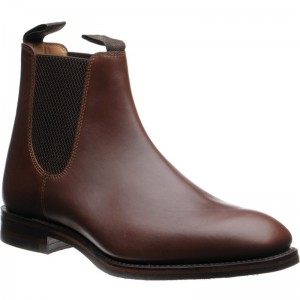
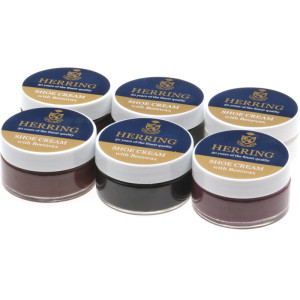


 UNITED STATES
UNITED STATES ![Close [x]](https://assets.herringshoes.co.uk/images/16/close.png)
